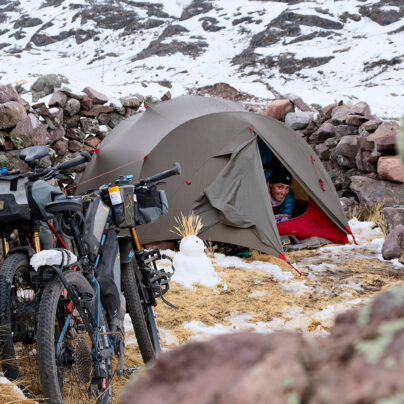In the wake of the Finnmen
From The Field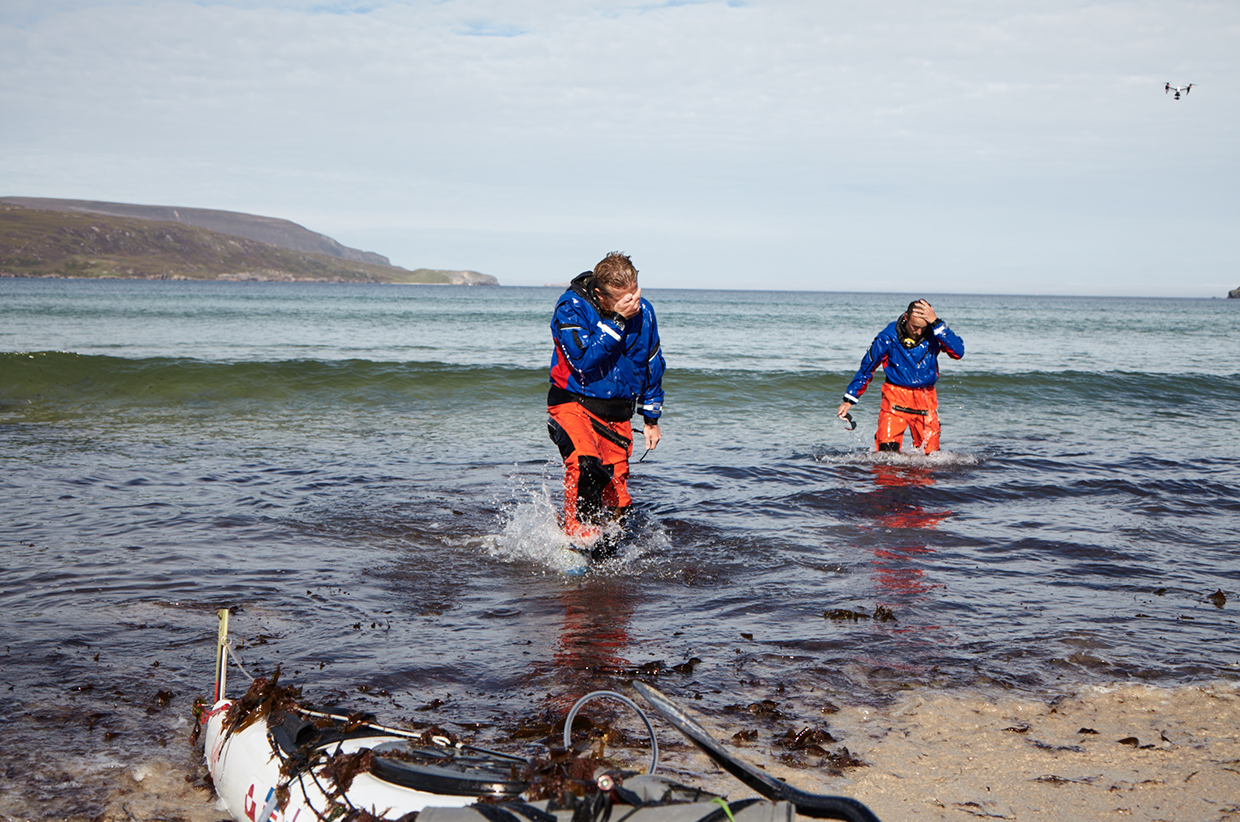 Photograph by Henry Hunt
Photograph by Henry Hunt
Olly Hicks and George Bullard paddled from Greenland to Scotland in a sea kayak in the wake of the Finnmen. They covered 1,200 miles in six weeks, spending 12 nights at sea paddling by the light of the midnight sun.
Where are you right now, and how do you feel after your challenge?
George Bullard: Right now, I’m standing in the rain, wet and cold in Norfolk. So things really haven’t changed that much! After you finish a journey like this the emotions and thoughts are varied: one the one hand we are both delighted that we have completed a journey that some said wasn’t possible, we have completed a great adventure and exposed an ancient myth. On the other hand, I guess we are also relieved, we rolled the metaphorical dice with nature, the ocean and our own lives and come out alive and successful.
Olly Hicks: Now I’m in Somerset, at my future in-laws, on an ‘admin weekend’ stripping down the kayak and kit and putting it all back into store cleaned and dried! Pretty glamorous.
Already it feels a while ago that we were kayaking day in day out – let alone trapped on our own North Atlantic Island for a week! Sometimes seems like it was just a dream/nightmare – still remarkable to think we paddled all the way from Greenland in such a small craft…
Why did you decide to do this challenge? How did the idea come about?
Olly: The idea came from my friend and accomplished paddler, Patrick Winterton. We’d already paddled the North Sea from Shetland to Bergen (on our 3rd attempt!) on the Shetland Bus expedition – having sworn we’d never get in a kayak again we were plotting this expedition about two days later! The rose tinted specs come on pretty quickly! The idea for the Finnmen Exped was actually sparked off when Patrick read the book ‘Searching for the Finmen’ by Norman Rogers, which explores the various theories of who the Finnmen were and how they could have come to be in Scottish waters.
George: After Olly’s paddling friend Patrick Winterton read a book called Searching for the Finmen by Norman Rogers. Patrick wisely decided he didn’t have enough time and so Olly then asked me to get involved. We decided that we wanted to try and shed light on this ancient myth, helping to give reason to some of the unanswered questions around how the Inuit arrived on a beach in Scotland.
What did you hope to achieve? What was the key aim?
George: We hoped to paddle all the way from the coast of Greenland to the coast of mainland Scotland. The key aim was to not only survive the horrors of the North Atlantic but to add fuel to fire of speculation about whether the Inuit could’ve indeed paddled the entire way from Greenland to Scotland.
OH: The key aim was to make the kayak journey from Greenland to Scotland without support on the ocean legs. We wanted to prove that it is possible to paddle that route, albeit we were not going to prove anything per se as we were using modern gear, but a successful trip would perhaps add fuel to the fire of speculation that the Inuit could’ve paddled the route autonomously several hundred years ago. The project would also highlight this little known mystery of history.
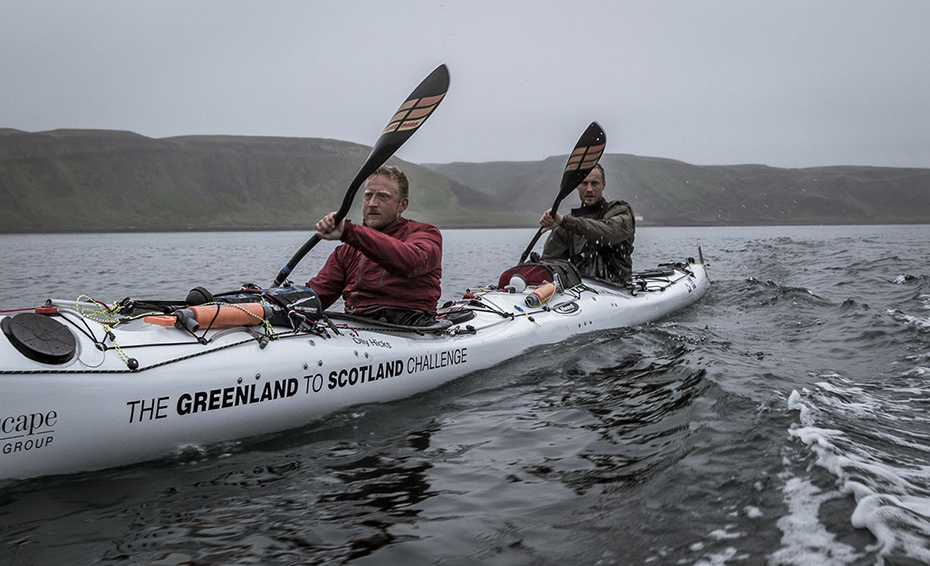
What were the biggest challenges?
Olly: The biggest challenges are living in the cramped, grim confines of a kayak, and keeping warm in what is effectively a submarine environment. And the weather in that part of the world is very fast changing, so we were going to be rolling the dice in terms of what weather we’d get on some of our bigger ocean legs. For example, between Iceland to the Faroes, you can only accurately forecast out to 48 hours was our experience and we needed at least five days to cross to Faroes… We also had to wait on the Faroes for three weeks for a gap in the weather to let us cross to Scotland. Even then we only got 48 hours of fair weather and had to shelter on North Rona for a week.
George: The biggest challenges (aside from the obvious ones of distance, weather) and indeed the biggest risk to life, was staying warm and dry. Exposure to the elements in a kayak is something that is simply impossible to avoid. We have one inch of freeboard between the surface of the water and us, so we end up wearing most of the waves. Of course when you get wet in the polar regions, it becomes super hard to stay warm. So aside from the obvious challenges like how do we go to the loo (!), staying warm was our biggest and most severe.
What were the scariest moments?
George: The Faroe Islands are famous for standing waves and roughs seas. This is what we got caught in. The combination of strong currents, tides and opposing strong winds kicked up some terrifyingly large and short waves. Just as we were approaching the safety of the fjord on the southernmost island of the Faroes, Suduroy, we were watching some huge waves breaking into some rocks on our right hand side. All of a sudden we were in the surf zone and two large waves began curling over our heads. The next milliseconds where a complete blur, and neither of us can remember any particular movement or actions that we did, but we came out the right way up. I remember as soon as my head came out of the surf, looking forward to where Olly normally sits and seeing nothing but swash, he was still underwater and thankfully popped up a second or two later. We then paddled seriously hard to get out of this reef break but not before we got catch by one more wave… Luckily all was well; high on adrenaline, but alive!
Olly: For me always the scariest part is taking the leap of faith and leaving a perfectly good yacht, dock or beach, and setting off onto the big old briny for an ocean crossing and all of the uncertainty that entails in such a small craft. Once you’re out there and in the thick of it you just have to get on with it so there’s less time to think about being scared. We got caught in a F8 gale on the north east coast of Iceland and having been an exciting downwind sleigh ride it turned into a slog to get off the wild and growing seas as quick as we could before the gale worsened or we were worn out fighting it and driven onto the rocks.
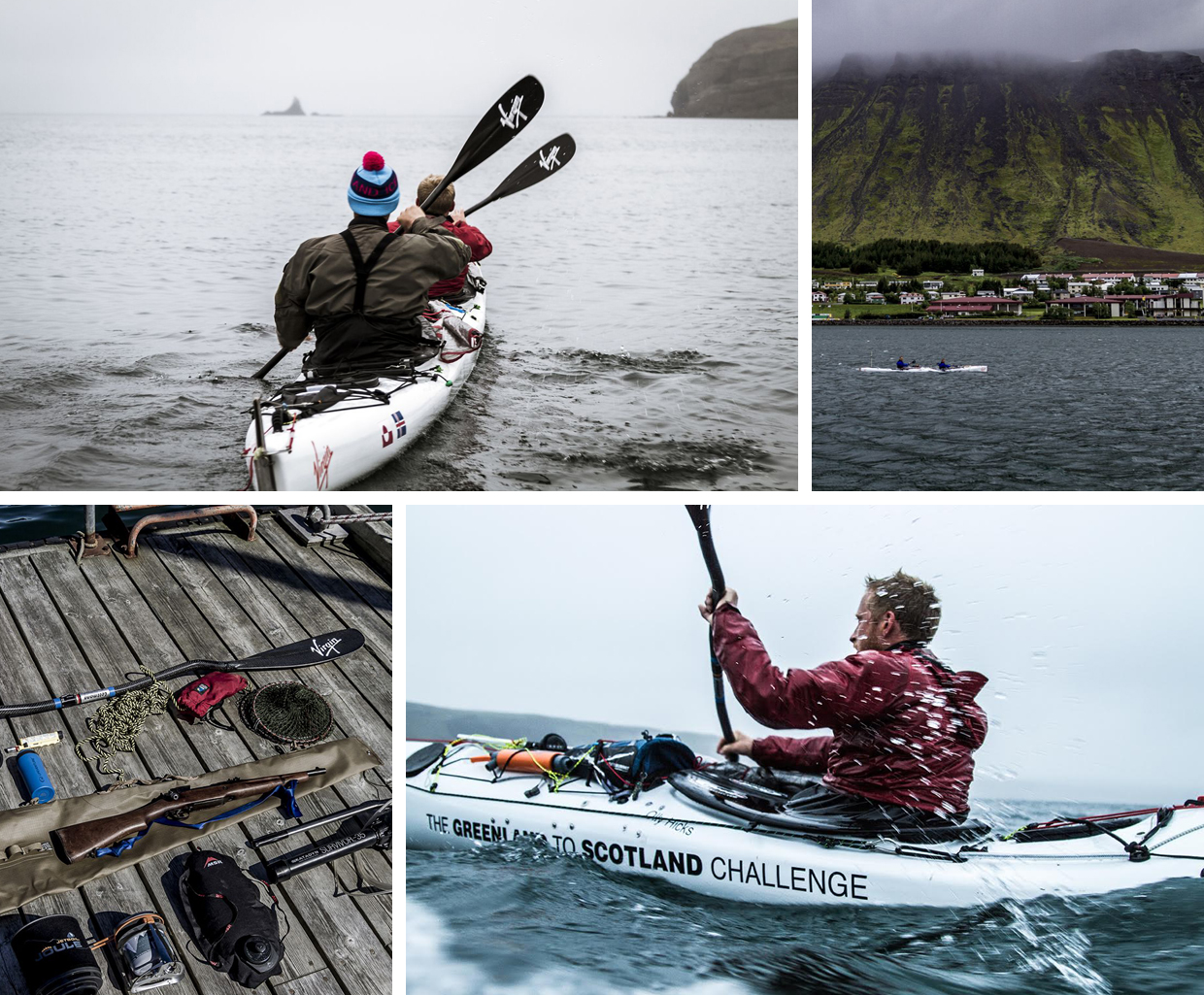
What surprised you most during your journey?
George: Not only was shear size and expanse of both the ocean and the night sky staggering, but also the power of the weather and how susceptible the kayak is to even the smallest of adverse conditions would have rendered our efforts at professing futile.
Olly: The incredible hospitality and generosity of almost all the people we met in Iceland and Faroes. Also the great handling characteristics and robustness of our 26ft kayak – paddled through surf, breakers and dragged up and down boulder strewn beaches without complaint!
What was the most important thing you learnt?
George: As I mentioned, we are entirely at the mercy of the weather. As we progressed we learnt vital skills in weather forecasting and exactly what was possible in the kayak and what conditions were simply too much.
Olly: Patience and humility. In the face of the weather you can do nothing, we are nothing compared to the power of nature, a little known lesson in this day and age. The Red Bull film crew wanted us to paddle out into gales and hurricanes: they understood nothing of the reality of the oceans and the respect required to traverse them safely in a small boat.
What was the most useful piece of kit?
Olly: The most Important bit of kit was our sea anchor/parachute anchor. This keeps you safe when the gales come in and allows us to rest in relative safety. It keeps the boats bow into the weather and there she can ride the waves more safely.
George: The innocent pee bottle got the most use out of everything I had. Obviously going to the loo was tricky, but the piss bottle is a perfect piece of kit. I now have one at home!
To someone hoping to embark on their own expedition, what advice would you offer?
Olly: GET CRACKING! It always takes longer than you think and the hardest part by far is getting to the start line. This project took me five years to bring to fruition – three prototype kayaks, two attempts and two successful North Sea crossings, training runs and sea trials. By the time we started I’d brought onboard 28 sponsors to support the project. It’s the same as running a small business – the paddling was straightforward by comparison!
George: Don’t forget your pee bottle… it’s game changing!
Finally, if you could go back in time and tell yourself something as you were setting off what would it be?
George :“Just don’t stop paddling” and “fishing around Iceland is incredible and delicious – make sure to fish everyday!”
Olly: DON’T DO IT!!! Or perhaps what we had as our mantra: ‘Paddle or die’. It’s as simple as that!
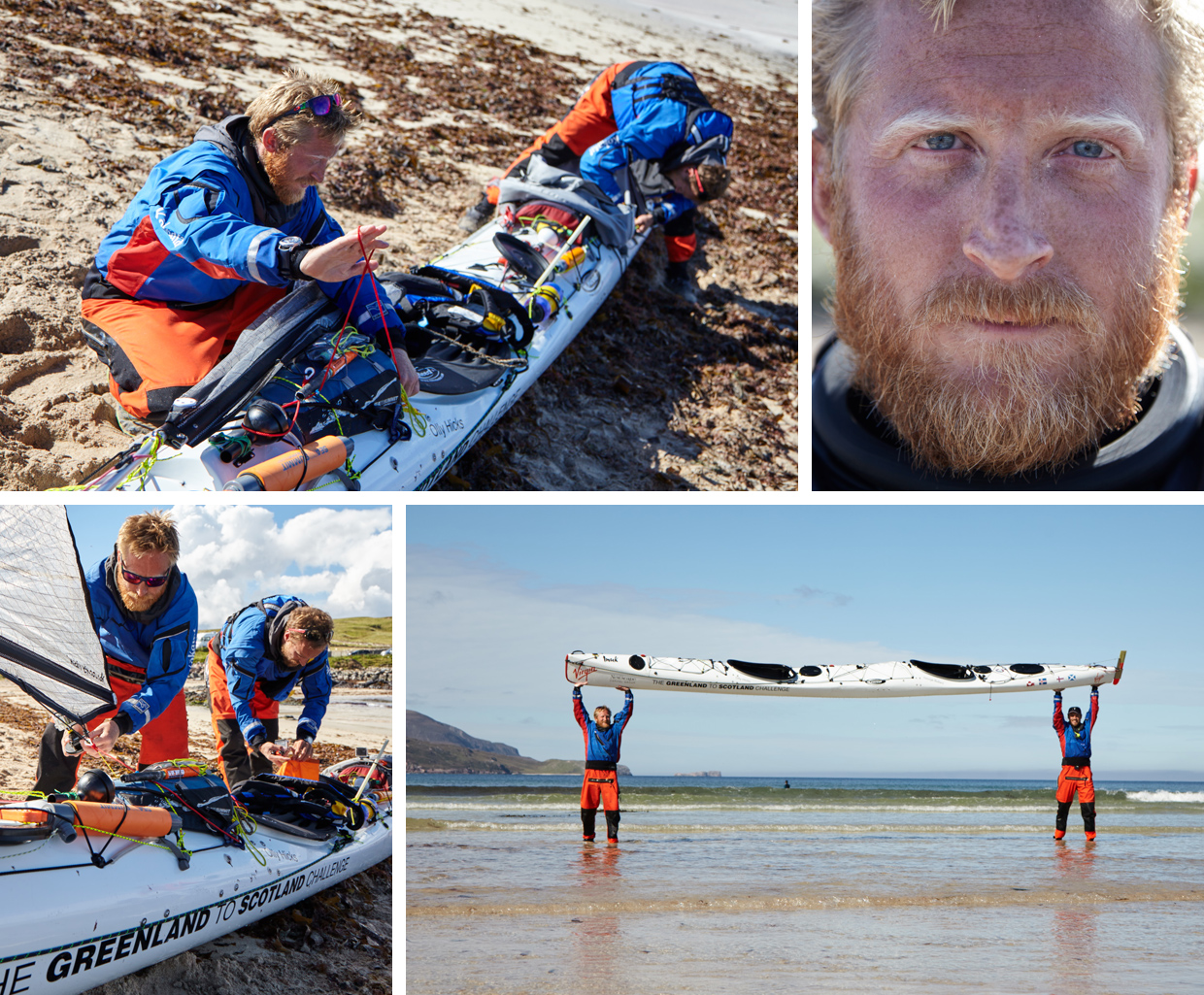
Olly Hicks and George Bullard will be talking about the Greenland – Scotland Challenge at the Royal Geographic Society on 22nd November 2016. For tickets, visit ollyhicks.com
@ollyhicksadventures // @georgebullardexplorer
—-
Olly Hicks writes about crossing the 300-mile ‘Devil’s Dance Floor’ in issue 8 of Sidetracked, available now from our shop.
